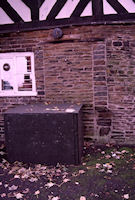
Figure 9: Blocked doorway at Bishop's House, Sheffield
The 1960s and 1970s saw an increased confidence in works undertaken at historic houses, with whole sections of buildings that were no longer extant being reconstructed conjecturally from evidence within buildings. This work often opposed the accepted principles, and while this was recognised it didn't seem a major concern.
"The restorers at Singleton [the Weald and Downland Museum], in effect, take a deep breath, decide that such-and-such a date is the true 'original' date, strip off all subsequent appurtenances and modifications and, in so doing, open a direct view into the past. The technique totally contradicts William Morris's canon that it is not possible 'to strip from a building this, that and the other part of history...and stay the hand at some arbitrary point'. But it works at Singleton, arguing that there is no such thing as a 'final canon' in preservation" (Chamberlain 1979, 174).
This 'boom' in physical reconstruction of historic buildings in the 1960s and 1970s, is evidenced through work at Blakesley Hall, Birmingham and Totnes Elizabethan House, Devon. At Bishop's House, Sheffield, doors that were thought to be later insertions were reblocked in the 1974 reconstruction work (Fig. 9).
At Blakesley there was evidence for a lost screen, which would have divided the hall from the entrances, and its form was suggested from the mortice-holes in the structural timbers. This was reconstructed in the 1970s, but the exact design was conjectural. Later redisplay included the whitewashing of the screen, which obscured the differences between the wood of the historic timbers and the modern screen.
© Internet Archaeology/Author(s)
University of York legal statements | Terms and Conditions
| File last updated: Mon Jan 24 2011